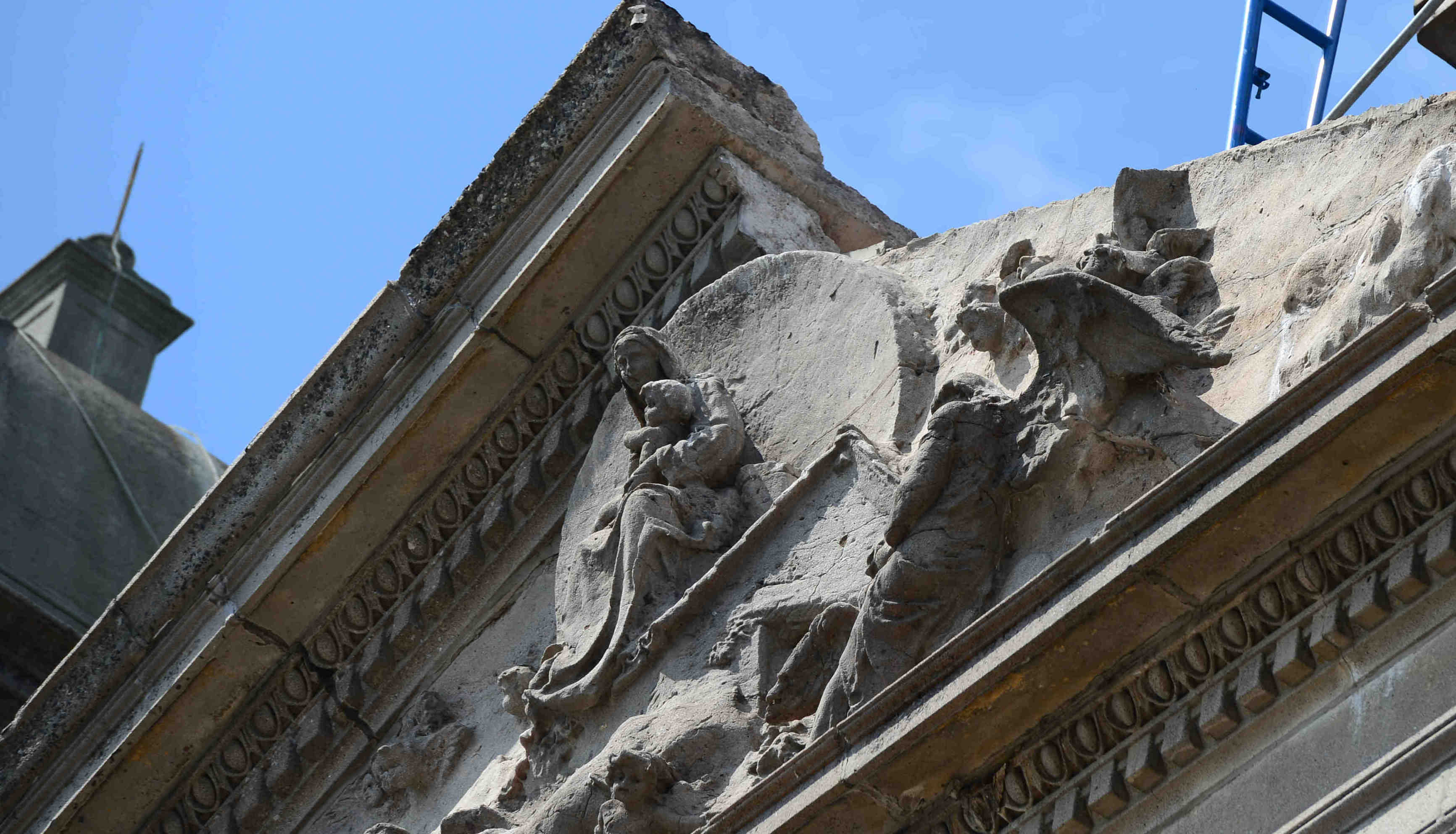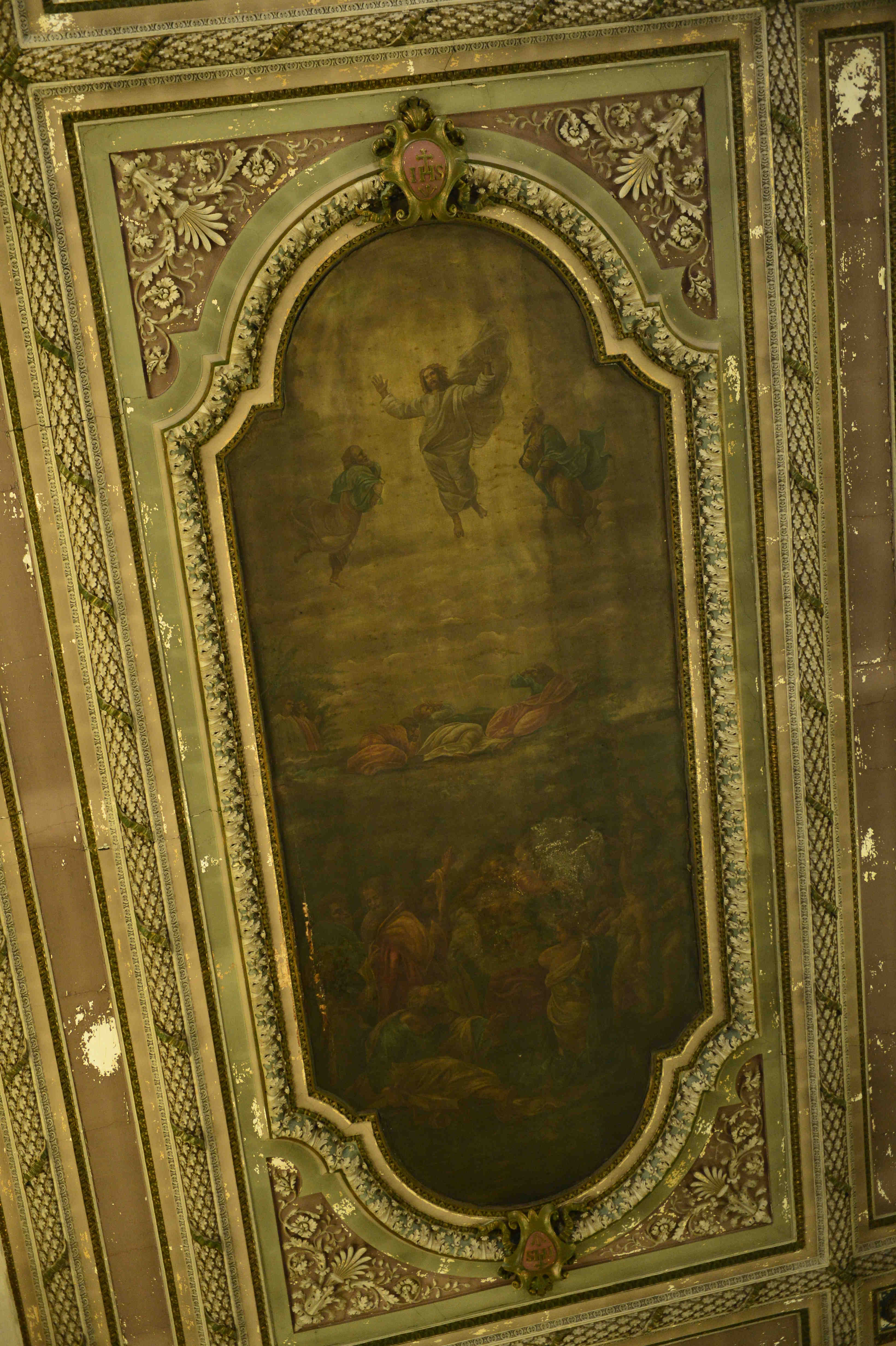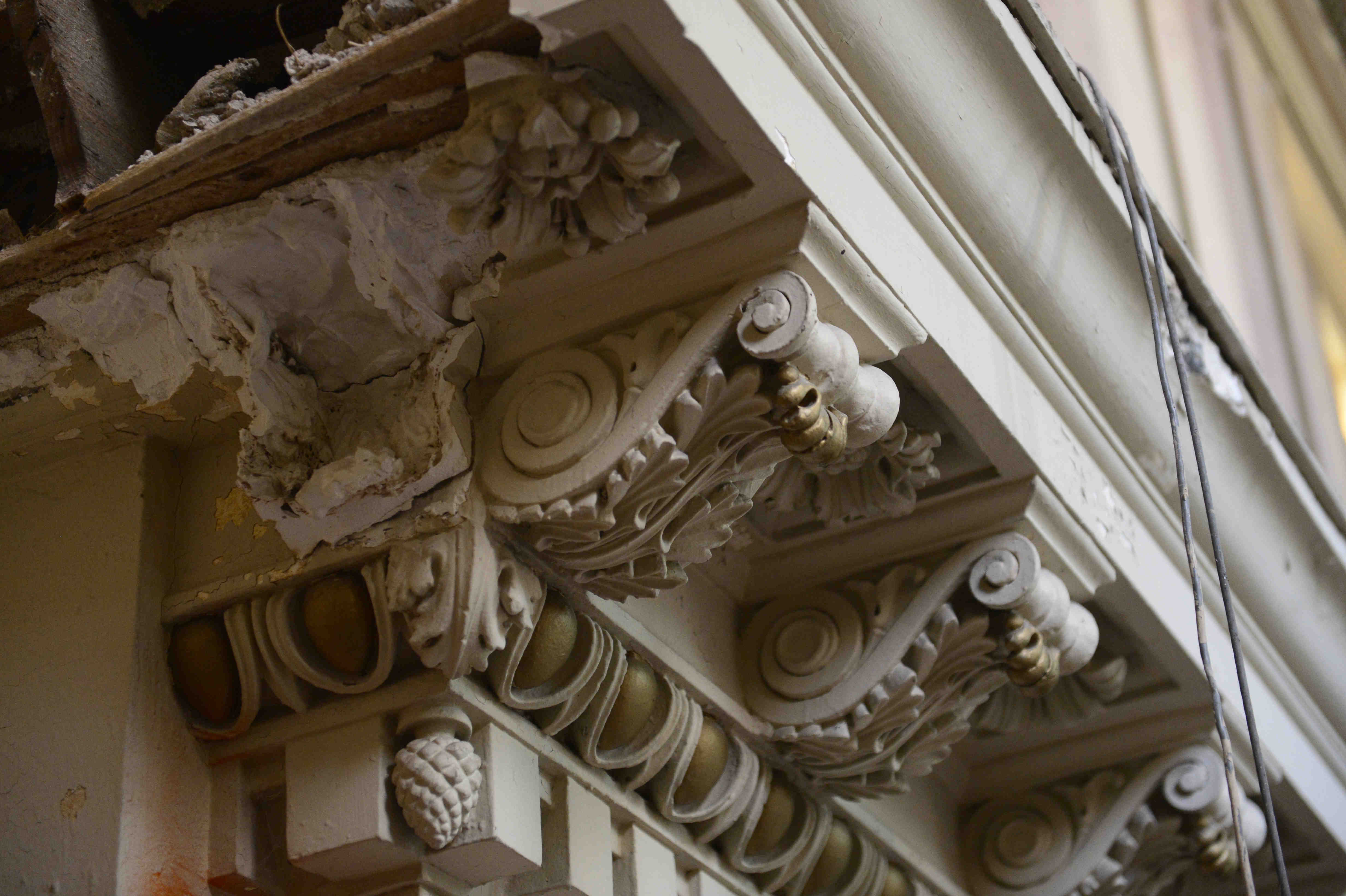Our Lady of Loreto, a Romanesque-style Catholic church, stood at the corner of Sackman and Pacific Streets in Brooklyn for 110 years until 2018, when it was demolished due to extreme disrepair.
Today, the consecrated land where it stood now has a rebirth of sorts, as Catholic Charities of Brooklyn and Queens and their partners prepare to construct a $48 million, eight-story, 135-apartment complex to house low income and homeless senior citizens – the Catholic Charities Loreto Apartments.
The project, celebrated at a Thursday ground-breaking, is a partnership with the Dharma Drum Mountain Buddhist community, New York State and Wells Fargo Bank who is the financial partner.
Preservationists fought the destruction of the church, built in 1908, but the Diocese of Brooklyn believed the more than $9 million in estimated repairs was no longer a feasible effort. Much of the congregation had relocated to the more affluent neighborhoods and the suburbs.
The many statues and art works that adorned the church in the former working-class Italian neighborhood had been carefully removed for safe storage or relocated to other churches. Then the demolition began.
Even so, much of the massive structure continued to stand Thursday, lying in wait of the wrecking ball.
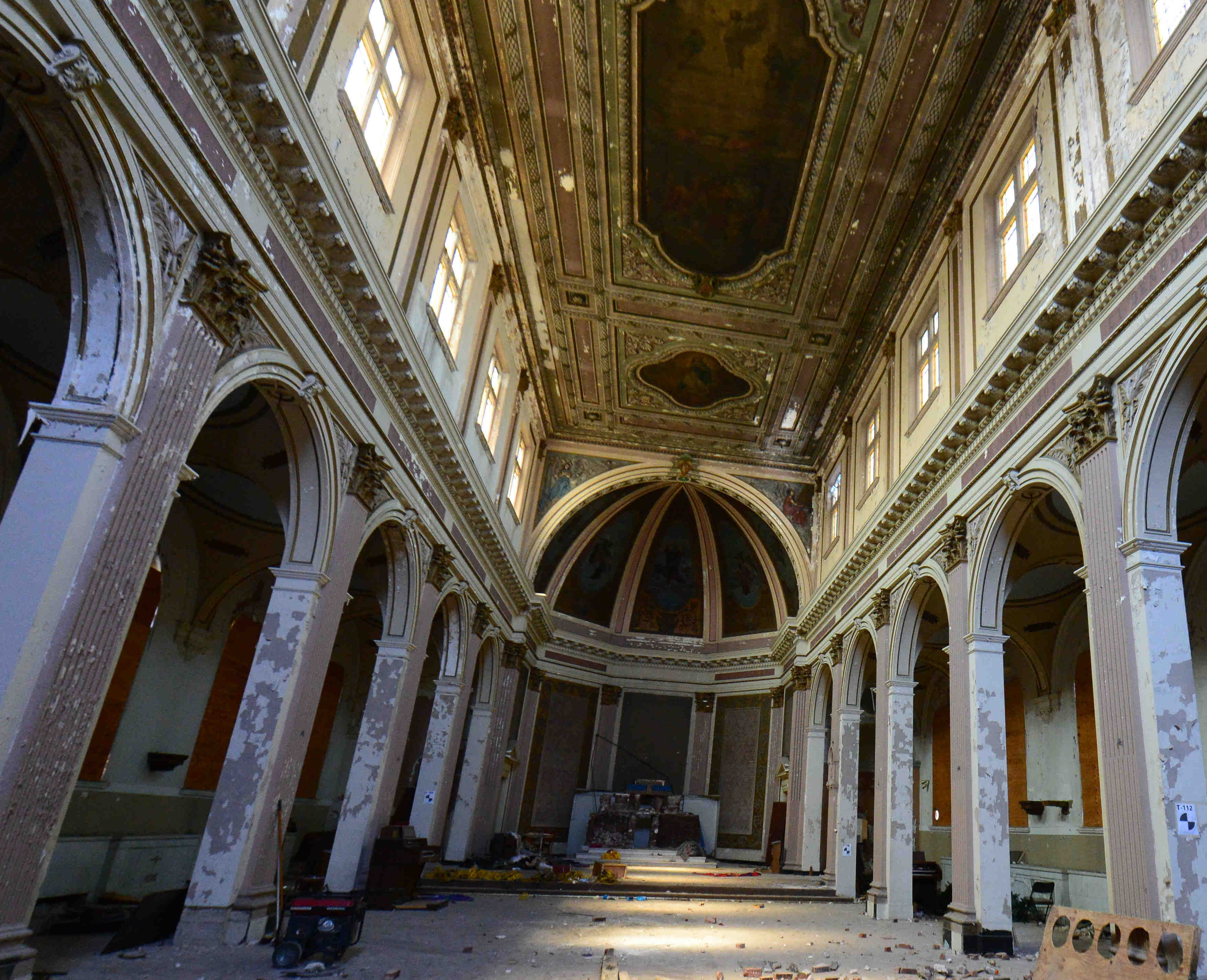
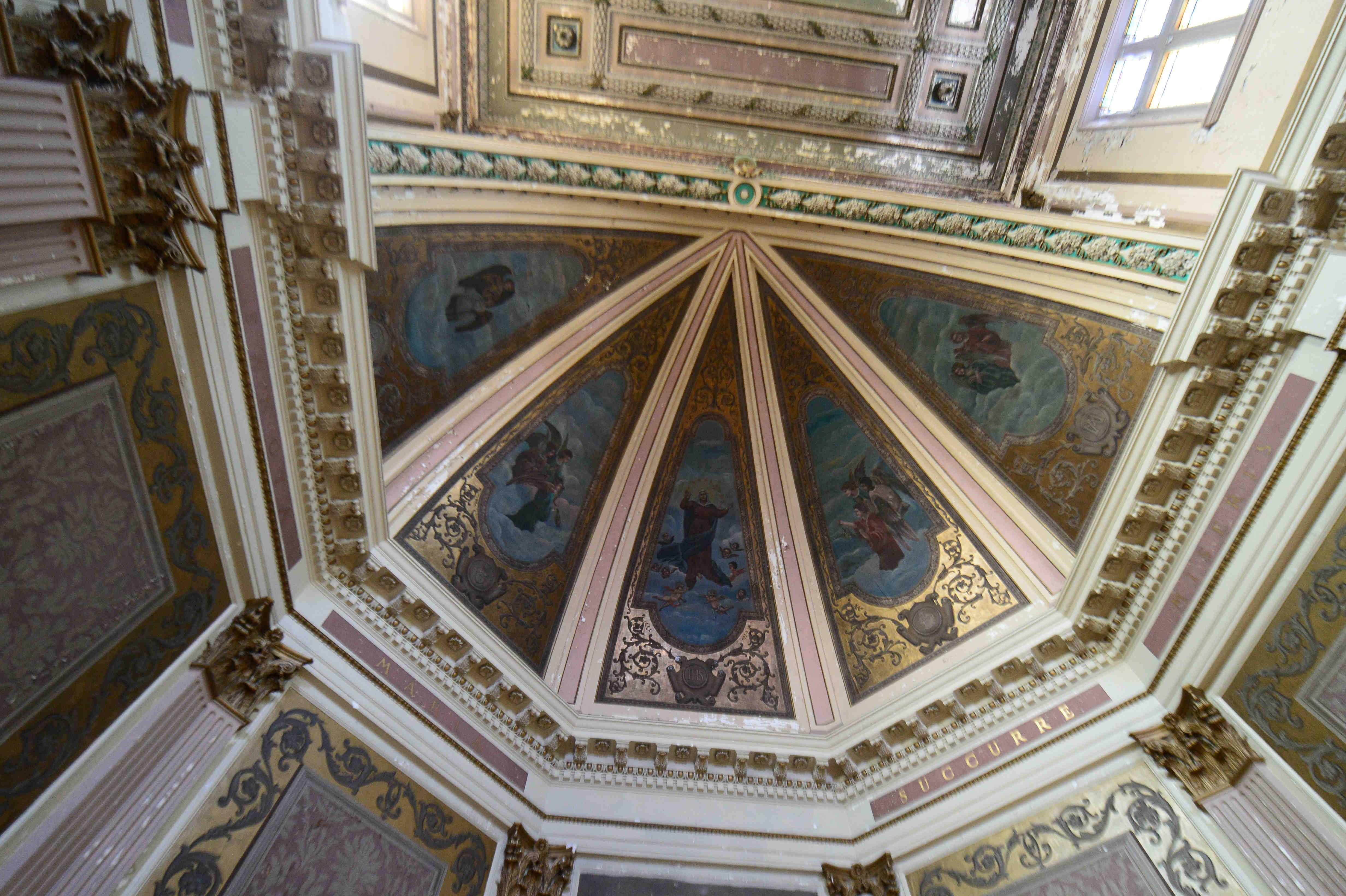
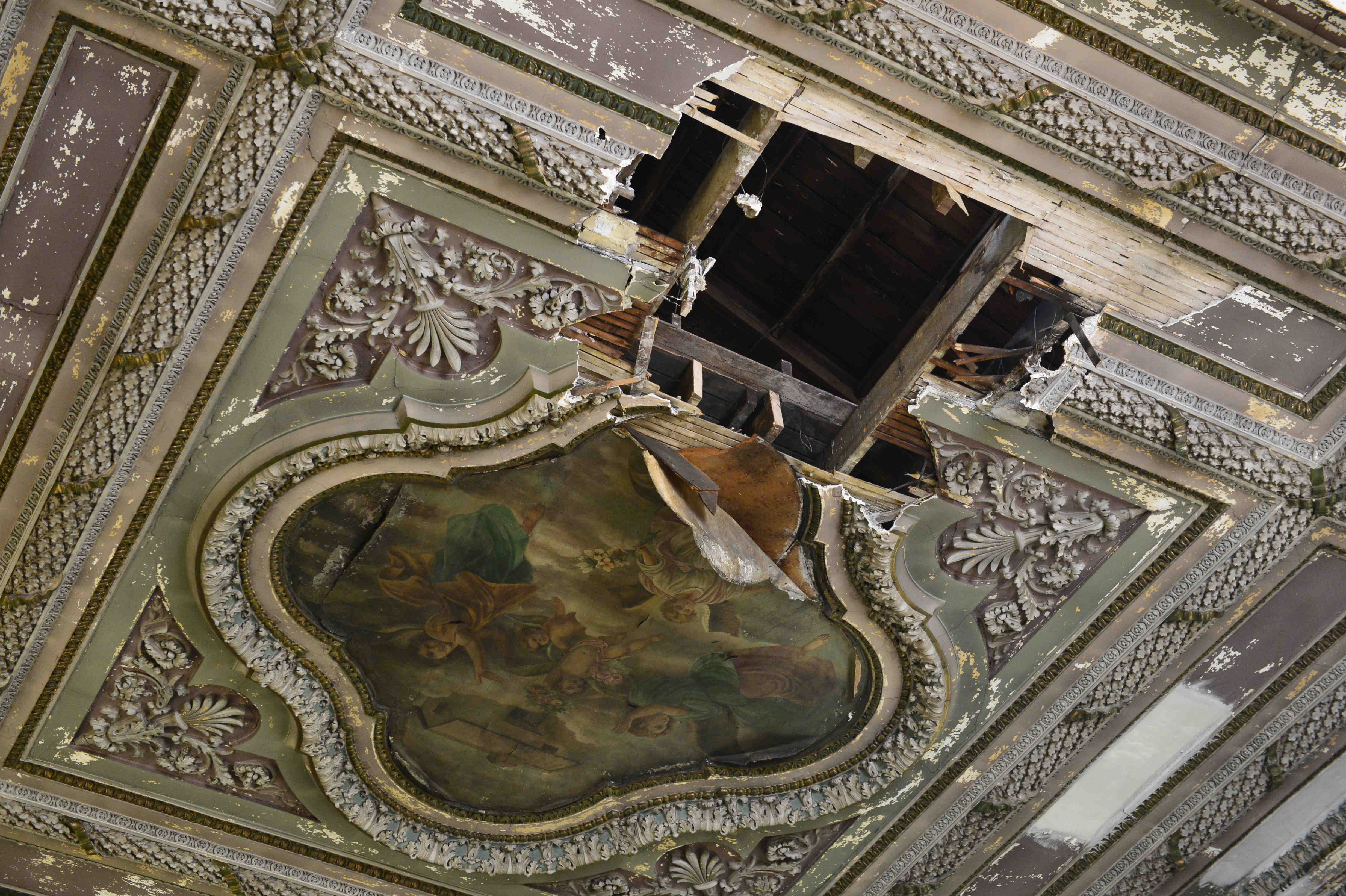
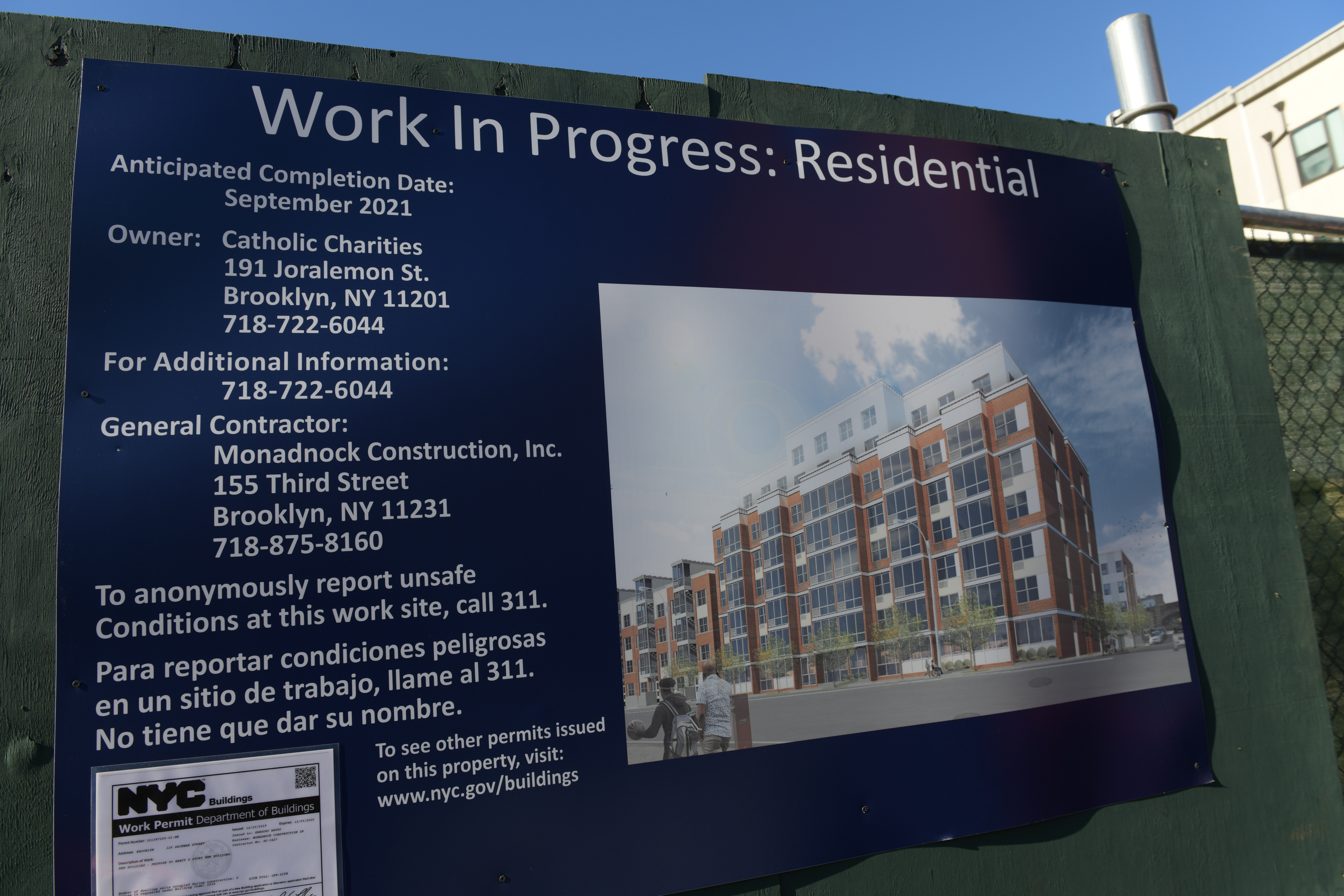
Happily, some of the saved art work will return to the new building’s lobby when it is complete, said Monsignor Alfred LoPinto, CEO of Catholic Charities — a former Our Lady of Loreto parishioner who went on to lead the parish church until its demise in the 1990s.
“In the new building, the lobby will have a display of all of that art work – an extensive effort was engaged to preserve as much of the by will be bringing back, it will come back, will be put in the lobby of new building,” LoPinto explained.
For LoPinto, this is a personal mission. Born in 1945, he was baptized at Our Lady of Loreto, and went on to make his first holy communion and confirmation there.
“We didn’t know ourselves as poor,” LoPinto recalled. “There were factories here and my mom and sisters were in the clothing industry, my father had barber shop and I worked in supermarket on Fulton Street. It was that kind of vibrant community — but people improved their lives and moved on.”
Around the 1950s, LoPinto said, the community began a decline and became crime-infested. The people also changed from the Italian immigrant community to Hispanic and African American of different religious background.
Red-lining — an often racist practice in which financial companies refused to back loans in areas they considered to be high risk — further deteriorated the community in the 1960s and 1970s. It propagated a systematic denial of various services for residents. The parish suffered with the community; the congregation dwindled and, by the 1990s, about 50 people would attend Sunday Masses, LoPinto remembered.
“People moved away and [the parish] didn’t have the financial backing it needed,” LoPinto said. “We were talking about $4 million in renovations just to stabilize the building. We tried everything we could think of – none of it worked out. It was a magnificent building, but things change and so you adapt to new needs.”
Now, LoPinto said, “The spirit of Loreto will live on as housing for families, housing for seniors, the property will go to a continued good use to now provide for a community of seniors and provide for a community of families who need to have affordable housing.”
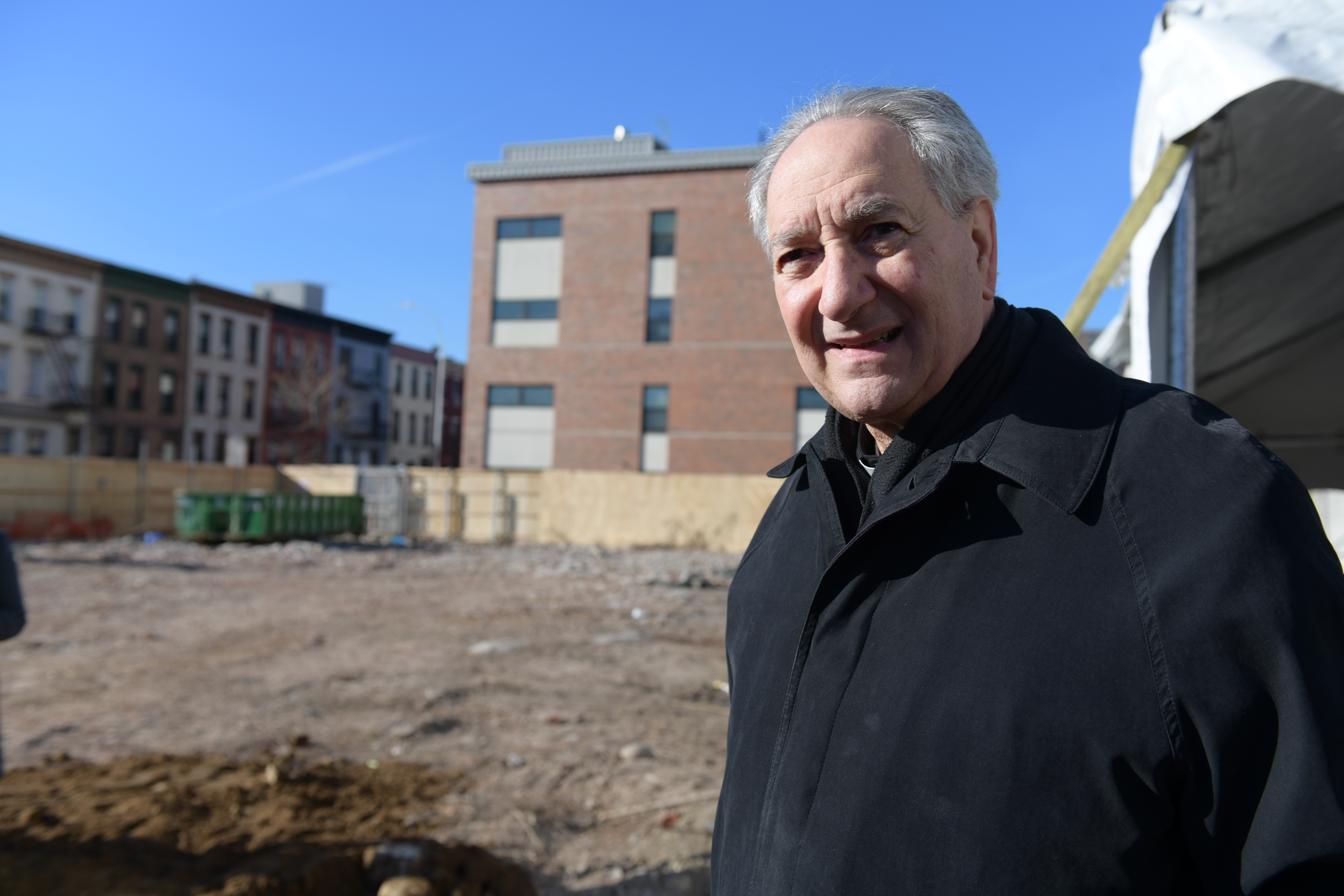
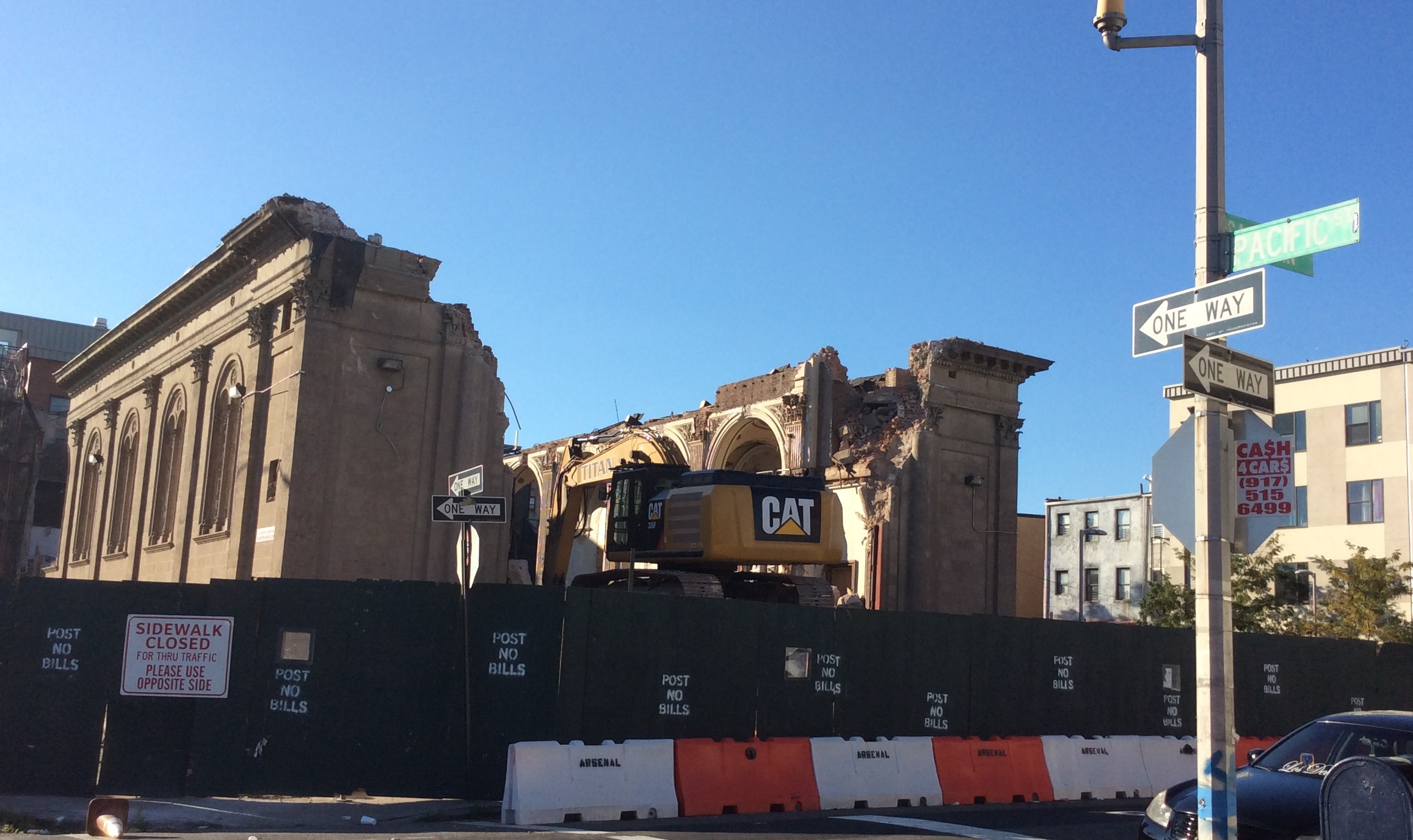
Bishop Nicholas DeMarzio called the project a “success story of inter-religious commitment for [the] elderly poor.”
“Catholic and Buddhist leaders came together with a social program – we can work together in service, and we went to Rome and the Holy Father blessed it,” DiMarzio said. “The site was beyond repair – $7-8 million just to stabilize the facade alone. It didn’t make a lot of people happy, but we couldn’t use the church building any more. Now it will be housing for poor and elderly.”
Councilman Rafael Espinal Jr. said it was a difficult decision to tear down the church, but added, “There is a housing crisis, and this [project] will help ease that crisis by providing a warm and safe place to live.”
“We have homeless shelters just a few blocks from here and folks who are desperate to see this project come up and provide them with the safe housing they need,” Espinal said. “As a good Catholic, I felt bad that we had to tear down the church that was here – I went to confession a few times, but I knew it was for the right reason. It was truly dilapidated and had no future. The new future this will provide is creating this housing and I’m proud we were able to work together to make it happen.”
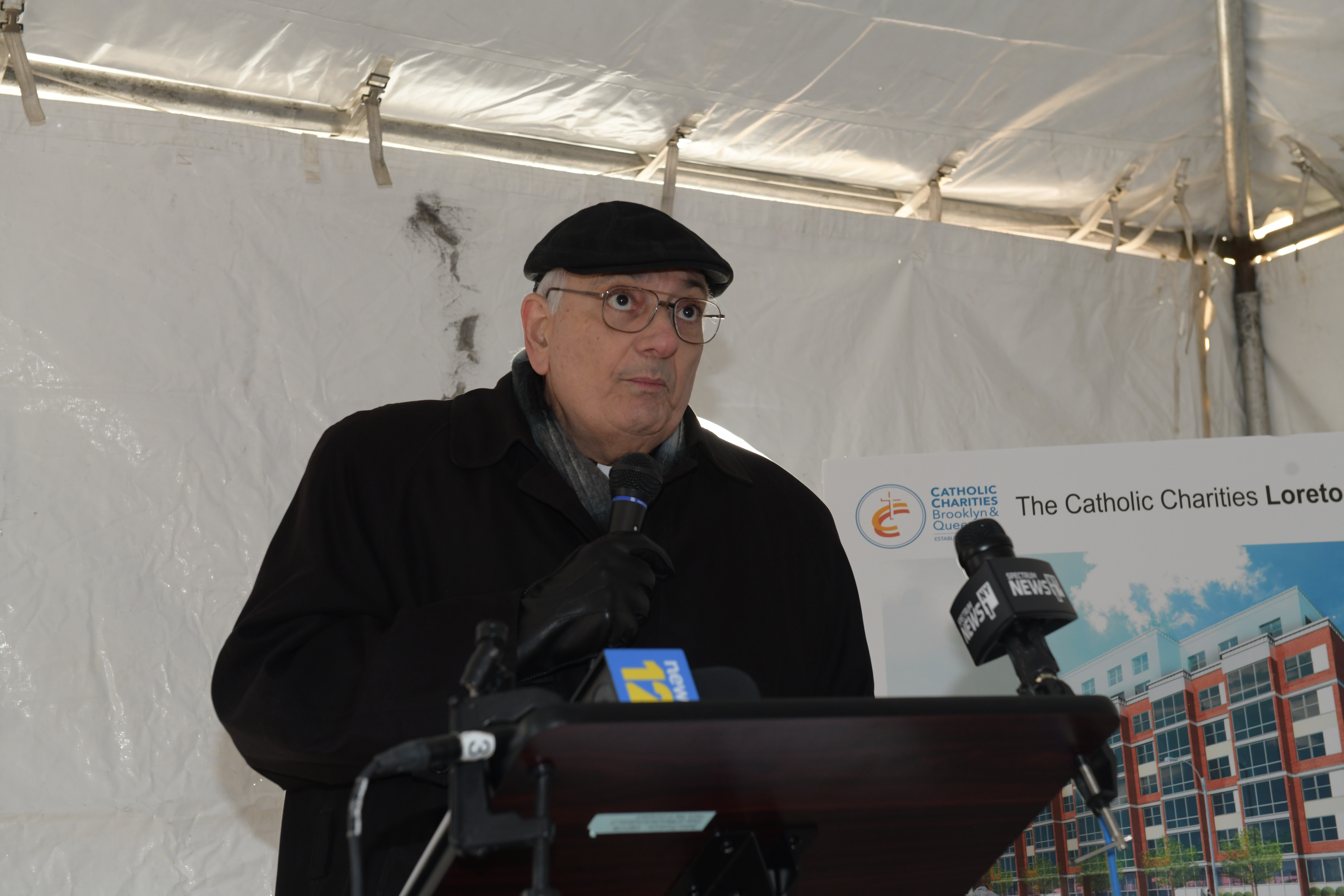
The new housing will integrate affordable independent residences for seniors with supportive housing. Of those, 54 units will target seniors 62 and older, while the remaining 81 units will be supportive housing units targeting individuals who are formerly homeless, 55 and over and are frail or disabled. There will also be onsight services.
The building will also feature a fitness room, lunge, laundry facilities, community room and solar panels to create low cost electricity and reduce the building’s carbon footprint.
Catholic Charities of Brooklyn and Queens is currently the largest faith-based provider of affordable housing in the nation and currently provides 4,330 units of affordable homes for seniors, families and formerly homeless and those struggling with mental illness.
